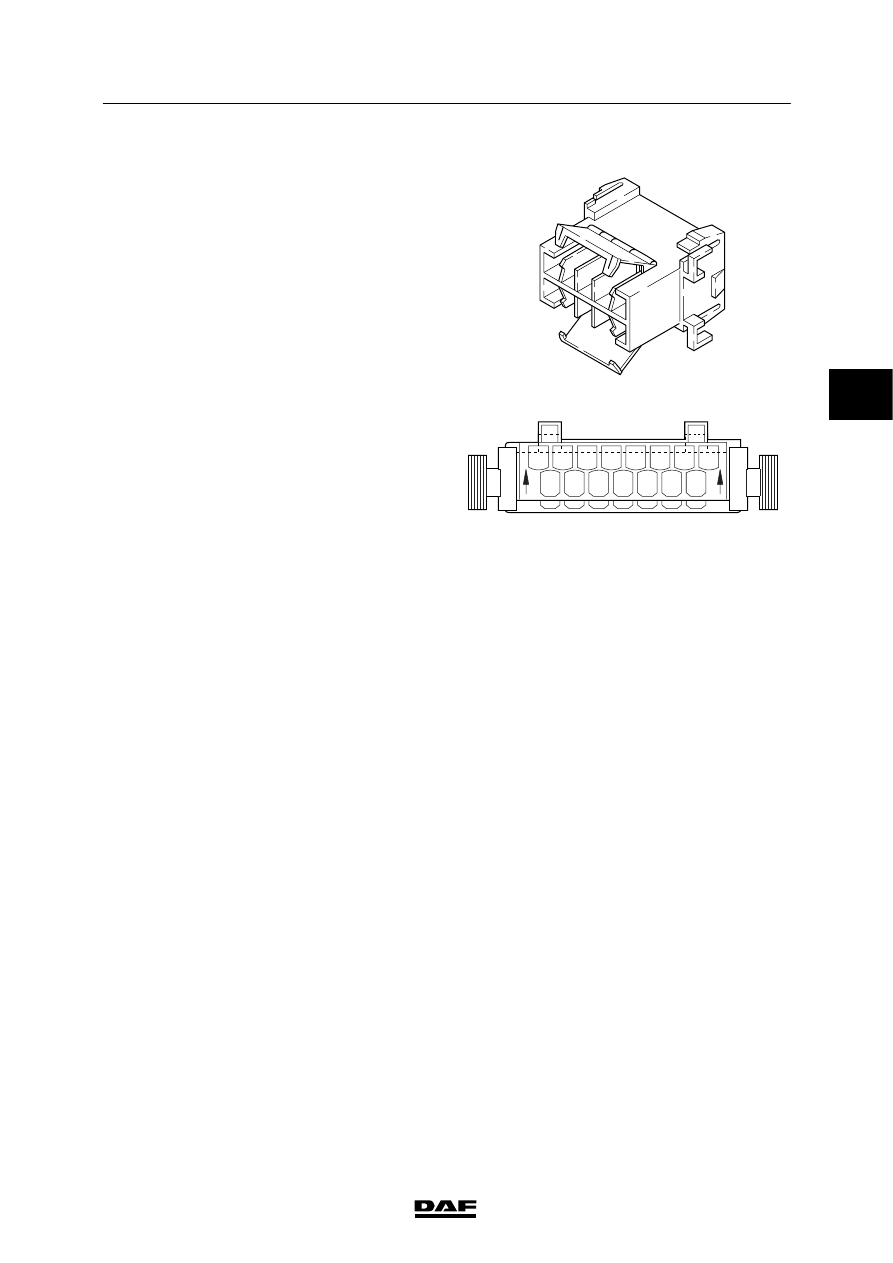DAF CF65, CF75, CF85 Series . Manual - part 502

5
CF65/75/85 series ≥0E621376
Removal and installation
REPAIRING WIRING
2-3
The contacts may also be locked secondarily by
the lower part of the connector. After tilting this
lower part, the contacts can be removed by
unlocking the primary lock using the proper
ejector tool.
This type of lock is used only on 2-row
connectors.
Examples:
-
MTCO connector
E501497
A different type of secondary lock is formed by
two sliding parts of the connector.
The upper half (on the wire insert side) and the
lower half form the extra contact lock.
To unlock this secondary contact lock the upper
half of the connector must be pushed away
slightly in the direction of the arrows on the
connector housing.
The contacts can then be removed from the
connector using the proper ejector tool.
After any installation of wires with contacts, the
connector must be pressed into the lock again. If
this is not done it will not fit into the counterpart.
Application examples:
-
Connector, CDS electronic unit
-
Connector, ECAS-2/3 electronic unit
-
Connector for UPEC electronic unit
E500475
15
8
14
7
13
6
12
5
11
4
10
3
9
2
1
15
8
14
7
13
6
12
5
11
4
10
3
9
2
1
3
200404